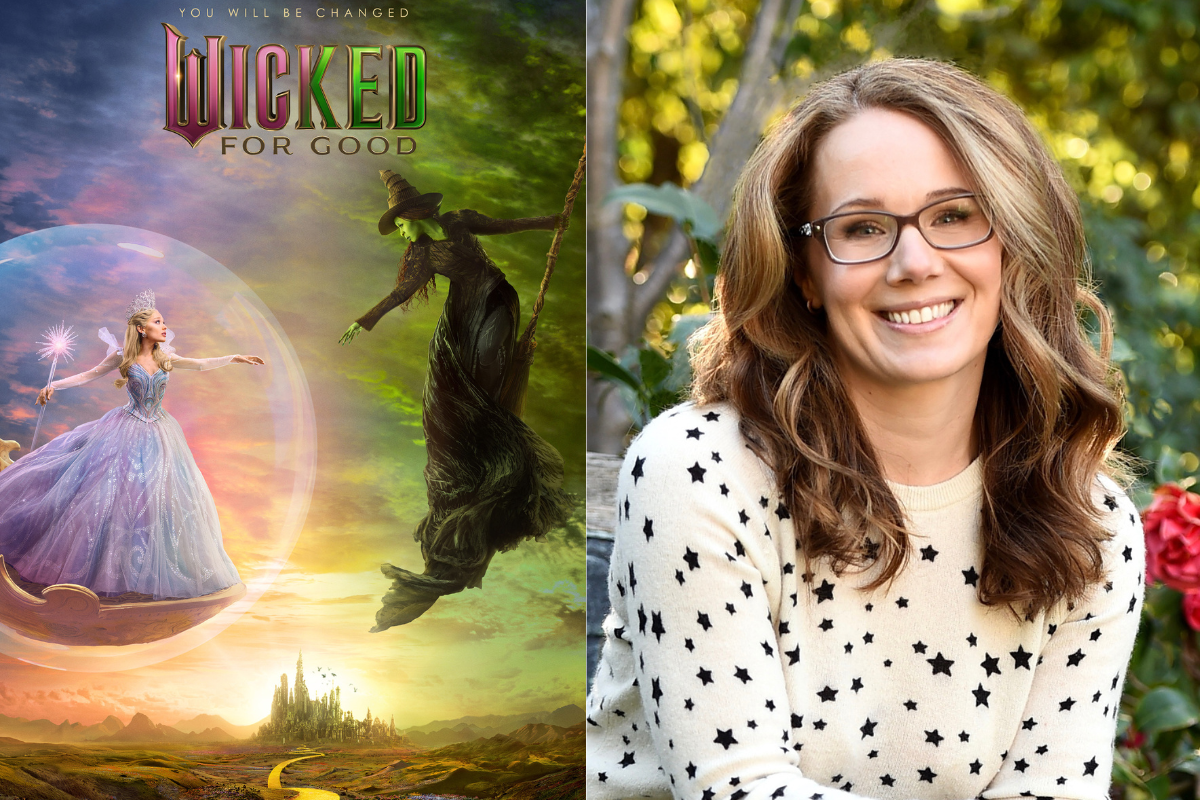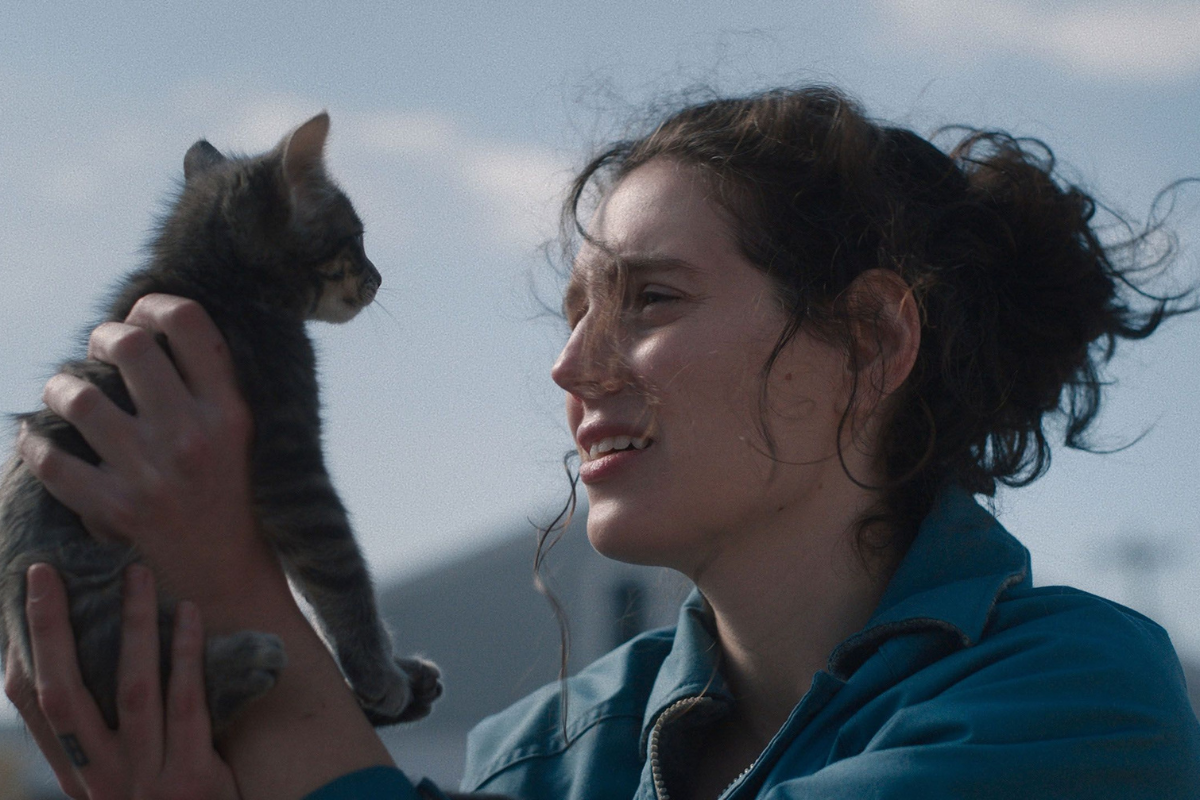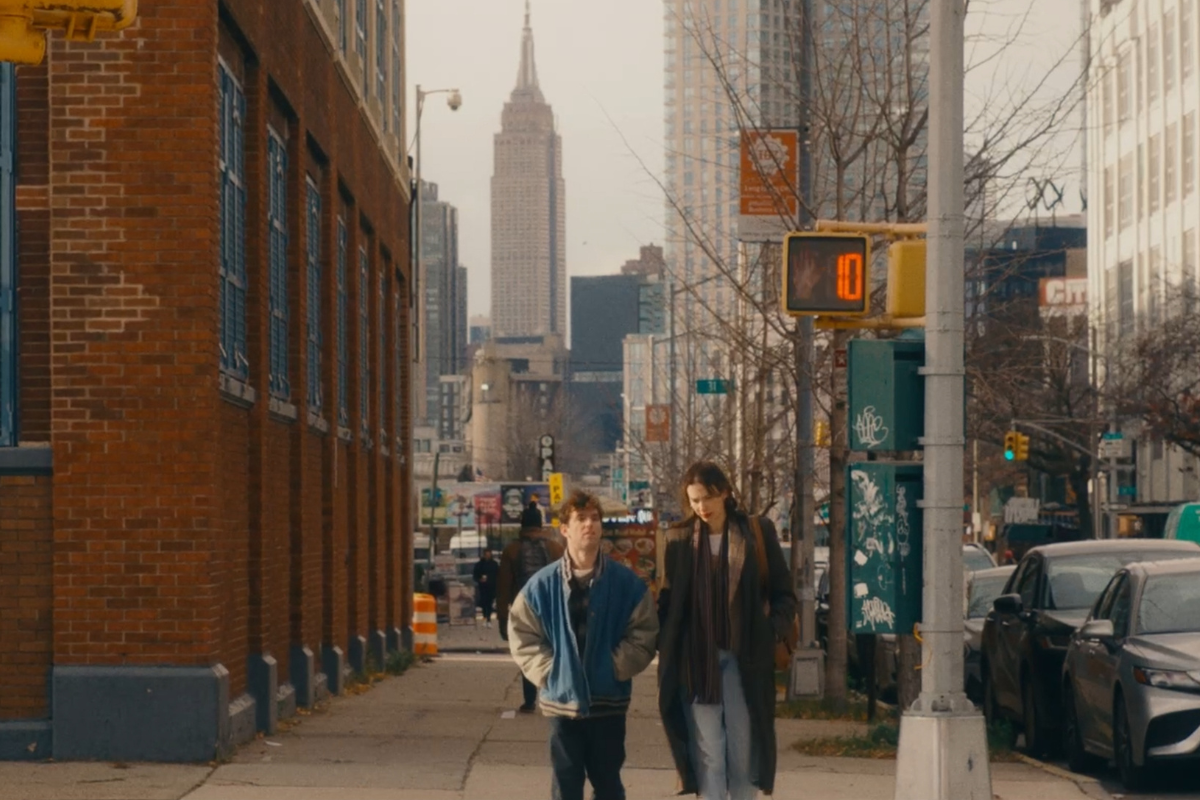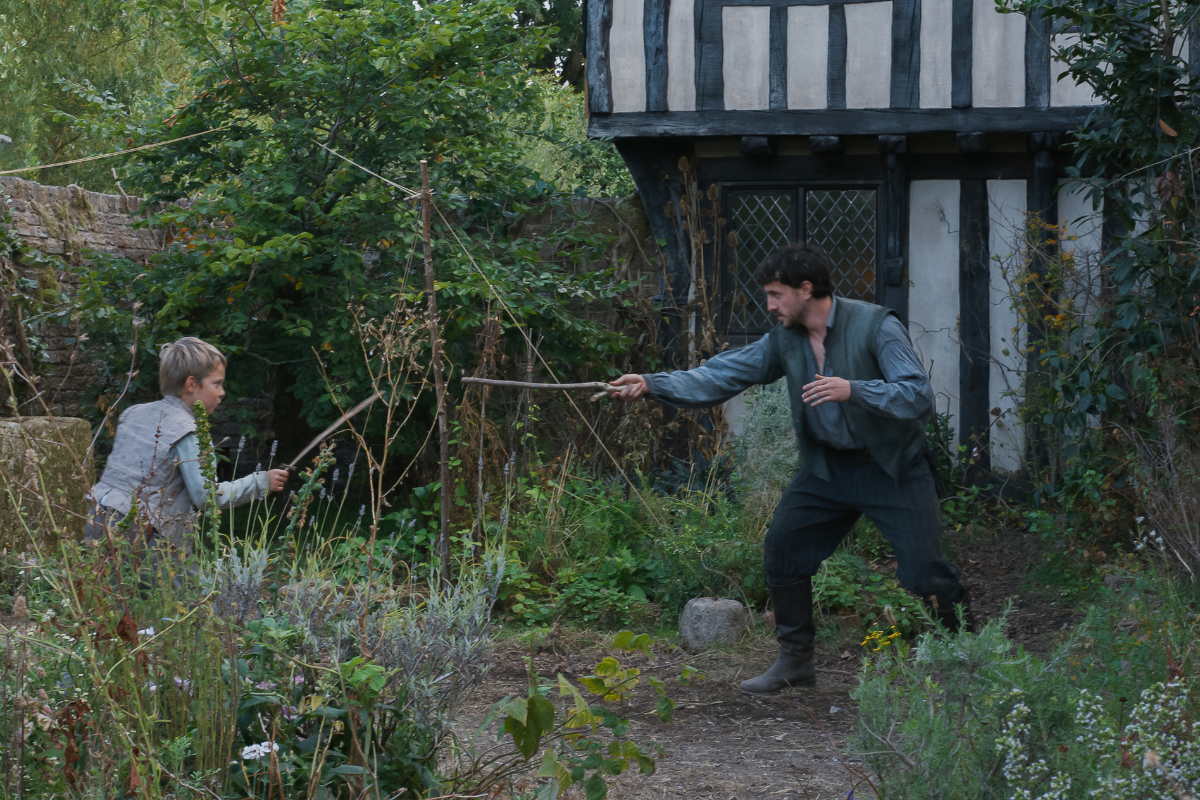Impactful Conflict: A Conversation with ‘The Follies’ Writer-Director Rodrigo García
Writer-director Rodrigo García discusses the thematic elements, emphasizes the importance of introducing immediate conflicts, and writing relatable characters.
Under the direction of Rodrigo García, 'Las Locuras' embraces the intensity and authenticity of human emotions when pushed to their limits. Six women, each on a journey of self-discovery marked by confinement, self-censorship, and social and familial pressure, unexpectedly cross paths on a rainy day in Mexico City.
Ever watch a film where the storytelling from the portrayal of characters to the dialogue, down to set design and even the silence in between seems absolutely effortless? Well, that’s certainly the case with filmmaker Rodrigo García’s latest film, The Follies. This film walks a very taut rope that effortlessly untangles at the right moment, giving the audience an emotional reprieve.
Writer-director Rodrigo García discussed with Script the thematic elements, character study, where he drew inspiration from, he emphasizes the importance of introducing immediate conflicts, and writing relatable characters. I implore you dear reader (and soon viewer of The Follies) to watch this film as intended in Spanish (with subtitles) to be fully washed over by these nuanced performances. (Oh, and if it you can watch it while it's raining, it's wonderfully immersive.)
This interview has been edited for content and clarity.
Sadie Dean: The idea of a folly and the thematic elements that play into what a folly is, were you, if at all, intentionally leading with that and those thematic elements that make a folly, and framing that into a narrative with these women at the core of it?
Rodrigo García: There's a couple sources for the idea. One of them, I do have a couple friends who have gone through manic episodes. And one of them, in particular, I didn't know he suffered from bipolar. He didn't know he was bipolar either. So, he started with a little bit of what Renata is going through. And my friend knows I did this, and he advised me, just started talking to him and seeing that he was super hyper, but also very focused, full of ideas, very energetic, very charismatic, funny. Then of course, after a few days, you could tell that something was wrong. But it interested me how his initial spirit had sort of motivated me to see him so motivated.
That's the one side, and on the other side, I've always been very interested in perfectly functioning, high functioning executive people who are smart, educated, intelligent, and who can go off the rails. Just a couple examples, perhaps you remember there was an astronaut a few years back - she drove from Texas to Florida to kill her opponent, and she wore a diaper so she wouldn't have to stop and pee. And I thought are there really more people tested for their executive function than astronauts? Tested for everything: pressure, fear, anxiety, phobia. And she went off the rails. And then another one that always bewildered me, I don't know if you remember a few years ago, there was this candidate, Edwards. He was a senator, I think, from North Carolina, and he was on the presidential campaign, and he was doing not badly. There was a woman who was following him, doing a documentary about his campaign. He had an affair with her during the campaign. She became pregnant, and he talked his head of campaign into saying that he wasn’t the father. And that's not crazy enough. He still thought he had a shot at being elected president.
Those are the roots. And, plus, I think there's a desire to unleash. We all want to let go. We all want to say what we think. We all want to pull the tablecloth if we could.
Sadie: And that's such a great starting place, too. And Renata is such a, such a wonderful character study. And just that ending where she finally takes her freedom back. There’s a sense of relief.
Rodrigo: And yet there is folly in it, because how long will she be out there? Maybe hours.
Sadie: Maybe hours, maybe minutes, maybe she's still there. We don't know. And speaking of Renata, there's such a great line she says, ‘We are always hiding what we think and feel.’ And I just felt like that was just such a great set up for how we were going to be introduced to these women and their individual vignettes. Every single of them being incredibly climactic. That character study for these women, how much backstory do you do before you start writing the script?
Rodrigo: I try to make conflicts that are introduced right away and that they are impactful on the character. But I think they can be very simple. Obviously, the psychiatrist, she is a scientist... she's a doctor, and she comes from a world that is very religiously conservative and suspicious of science. So, the conflict is there right away. She arrives home, and the first thing... she bumps into her sister, and her sister says, 'You bring us bad luck.' So already you're not welcome. Chapter Two, the mom meets them. They pray.
So, what I try to do is rather than a big backstory, although there are backstories in all of the I mean... rather than backstory, I introduce the conflict immediately and make it very relatable. The woman who is in love with Renata. We see someone who looks like she should be very confident and yet is going off the rails because she has unexpectedly fallen in love with someone.
So rather than big back stories, I think, if you just set a person in a world and show what the desire is, what the obstacles are, you don't need a big backstory. I often say to the actors, 'Look, I only know what I know from the script. If you need to write yourself a big backstory of when she went to school and what sport, that's fine,' but the conflicts have to be on the page.
Sadie: That's such an interesting way to go about it, too. And I feel like for your actors, it gives them that extra freedom of curiosity to explore where they can take their character.
Rodrigo: Yeah, in fact, I don't even ask them to tell me the backstory. I don't have full-fledged rehearsals, but we do have a couple of readings just to see what it sounds like, and if people have questions, but mostly, if it were up to me, I would just come to the set and let's see what happens. It's like a contract. I give you these pages. Don't rewrite them. I mean, we can add things, but these are the pages, and you interpret them, and then I react to what you're doing.
So, in fact, one of the most challenging things, not challenging, worrying things for me during production was what, Cassandra [Ciangherotti], who plays Renata, what she's doing. You can't really see that in rehearsal, she's not gonna give me that in rehearsal. We spoke, we exchanged some videos of people who were going through that, some books. But I didn't know what she was going to do until she was doing it. So that was a little preoccupying, but I can't really say to her, 'Show me what you're gonna do.' She managed to do something that I wanted to avoid, which is show Renata's energy, charisma and intelligence, her humor and her outlandishness, but without making fun of the disease. You feel for her because she is in this stage.
Sadie: Yeah, absolutely. The dialogue is rich and realistic. Once you cast these roles, what were they bringing to you as a performer to amplify these women?
Rodrigo: Well, in this case, and I've done it before, but in this case, was when I've done it the most. I was writing with a lot of these people in mind. I had worked with many of them on a previous film, and that included Renata, the woman who's in love with her, Renata's sister, the teacher in the acting class, the psychiatrist - at least six people. I was kind of writing with them in mind so I could hear their voice.
Every actor is an instrument. That's why not all actors can do everything, no matter how talented they are. If you sound like a violin, you tend to give a violin. So that was very helpful to me. And others I'd never worked with, like the couple that play the vets. They work a lot in Mexico, and they're well known, and I'd seen their work, but you have to go with a combination of your instincts. And yet, you discover so much when you're writing dialogue I feel.
I think even if you have an outline, or you know how things end, it's not till you hear people communicating or using language to hide, because language is not always about communicating. What I discovered during the dialogue writing is essential. And I find dialogue much easier to write than structure. Structure is always tougher. How to tell the story, where to begin, what the plot points are, but dialogue helps me understand the person better.
Sadie: I don't know how you do this, but your ability to paint such vivid female characters, their inner lives, and thought. I don't know if you were a woman in a past life or what, but I've always appreciated with your work, especially your film Mother and Child, how you’re able to tap into those specific voices. I'm curious how you, how you approach that work and find that balance. So, I'm curious, is it more of an observational thing for you? Are you having conversations? A little of both?
Rodrigo: I think it's, I mean, just from my life, I like women. I'm interested in women. They're not all the same. I have a lot of women friends. I'm constantly interrogating people. Now that the abuse of power on the set is clearer, I'm a little more cautious. But before, I used to interrogate everyone about their life, because I just wanted to know.
The first script that I wrote, or started to write, which is the first movie that I did, I wanted the stories to be about men and women, but right away it was clear to me that the women I was writing were better characters. The men were either good versions of me or bad versions of me, you know, the good guy the bad guy. And it's only lately, in the last 10 years that I've gotten better at writing the guys.
But to answer your question, I never feel like these are movies about women. I feel like they're movies about these people that are going through what they're going through. I don't want to also be naive. I think what makes them work as women characters is that I think women are probably better communicators, better communicators of how they feel and think, you know, men tend to be more reserved or more repressed.
But I'll give you an idea. I just realized this week, I've been told by people who saw it that the movie is kind of a riff of when we say, 'Oh, women are crazy.' That never occurred to me. Do you know what I mean? It's never about people saying to women, 'Calm down, Don't be crazy.' All these patronizing things, that never occurred to me because I wasn't thinking about women and craziness.
There's something in the script for me is I want to be those people. I want to be the person who let’s go, I want to be the person who blows up. And the women just, it's more fun for me, it's exotic, you know, I'm not a woman. But to your point about writing women, well, for me, the test is, 'Will good actresses do the role?' I have written scripts, certainly two or three scripts that I could never get cast, because the women would just say, 'I don't understand her. I don't like her.' And once three actresses say to you, 'I don't like her.' You miss the mark. So, I yield. But with a movie like this… I've got these very talented, smart women saying, 'Yes, this is a real person,' then that gives me a lot of confidence.
Sadie: Renata’s father's home, was that always something that you were intending in utilizing as a framework for kind of like a revolving door for these different characters to come through?
Rodrigo: One of the original ideas, not the themes that I told you, there was an original idea that that everything would happen in the house around Renata, including people she would meet at the window, etc. But after I wrote the first story, I realized it's going to be tiresome never to leave the house. I want to go out and see people in their world. But the idea of the great house that is very run down was always in the script. These houses exist everywhere in Mexico City, of course.
This idea of something that has seen better days, that the father was living in, something that might look like luxury, but he's broke. Also, it might be the house where the mom left. It's this idea that that there's a lot of luggage. And certainly, she has a lot of luggage, Renata, when she talks about her mom and her own pregnancy, etc.
So, the idea that it all happened in a big old house, the house is beautiful in real life... but you visit people like that, and houses where people live like that. Something that has passed, something that was once big, and now it's downtrodden. And there was just something about the window, being there, looking out to the world, and the bars are like a prison, and then she's like a monkey in a zoo. Yeah, the house was always a big part of it.
Sadie: What a great centerpiece to have access to and utilize. Now, the men in this in this movie --
Rodrigo: The men? What men? [laughs]
Sadie: [laughs] They’re there, they're doing stuff! I think they are just as important in these stories. There’s dream scenario, at least for me, where there is another part to this movie where we see the men’s point of view.
Rodrigo: I don't know if I would do ‘now see the guys,’ but I have thought of doing The Follies with a different group of men. I find that in the last three movies, certainly, and maybe, as I get older and I have two daughters, they get older, it seems like I can't write anything that doesn't include a father and a daughter and a father and a grown daughter.
So, Ismael was a central thing - the fact that he is both a hard ass and a softie, someone who's taking care of her, but is also the jail man. I've been very surprised by how many people have pointed out to me the delight that it gave them after she tells the supermarket story. She says, 'Dad, was I wrong?' And he said, 'No, you did the right thing.' People enjoy that so much.
Sadie: ‘You should've burned the whole store down.’
Rodrigo: ‘You should burn it all down.’ There's a level there of complicity. And also, this is something you can't plan on, the two actors had great chemistry. The father daughter thing did come across. So the father figure, it's always there, and it's in different forms.
The other guy is the veterinarian. I wanted their folly to be in their relationship. It's not that they are crazy by themselves, but they have this complicated... I think we all know couples like this, that it's a constant fight, and yet they're never going to get divorced. 'You or someone like you,' as they say. So, I don't know much about the vet, except what she accuses him of, which is of not wanting to feel, not wanting to be in the moment.
And then I guess the third guy is the psychiatrist's ex-husband - a complicated guy. She looks like she's pretty complicated herself. Obviously, he was the abuser. He says, 'I was an alcoholic.' Well, sure, that contributed to it. I don't know much about him, but I don't think you have to. I think the actors might have to, like we said before, he could have built the whole thing for himself, but as an audience, you're just seeing what the conflict is. She doesn't want him here, and then we start to hear why.
I've gotten better at writing the men, but unless a movie is about men, I mean, I did a movie about two brothers, that was all the guys. I think it's hard to write about men without writing about robbing banks, invading Poland, blowing up a bridge. I think that's something, for example, that Alexander Payne does really well. You know, just regular guys who are just trying to find their way through the regular guy on the regular guy road. [laughs]
Sadie: [laughs] I like that. Another beautiful layer to this film is, that I especially enjoyed, was the actor’s movement class with Soledad. Her partner, he's deaf, and the silence says so much. The tug and pull of control and manipulation in that scene as well.
Rodrigo: I guess men do it, but I've seen it a lot with women, especially younger women, is they know nothing, or very little about a guy, and they're projecting things onto him. 'He's probably like this. He's probably like that. Oh, he took 37 minutes to text. That probably means this.' You're always trying to read the tea leaves with guys. And so this guy, obviously, because they met in the class, they were going to socialize.
And then I thought it'd be interesting... this was a little scary, because I'm a guy writing about in the class thing in particular, I'm a guy writing about the slippery contradictions of sexual power, and MeToo, and who has the power, and the fact that there's a little bit of sexual identity at play, where she's playing the guy, he's playing the woman, and he’s a geisha, which is a very traditionally seen as submissive. So that I thought was a little perverse in the sense that I was playing with sexual identity and with ‘you're an artist, but how much art can you really take?’
I did talk a lot to her, and to the actress playing the teacher, and to the woman who helped me choreograph with the body language and the class - that is actually the woman who plays Renata's stepmom, the card reader, she's an actor, and she specializes in movement. So, I did ask them several times outright, ‘Is this some heterosexual boomers perverse fantasy here?’ But they gave me some good feedback. And again, I'm not a woman, so I need the seal of approval.
Sadie: And the teacher in that scene says, ‘It's an honest reaction to unexpected situations.’ That sealed it for me. I can only imagine while you're filming this too, it's very meta. At the end of the day, what do you hope people take away from seeing this movie?
Rodrigo: You always want people, or I do, you know, people to see something that feels real, even if it's a caricature that feels real, that feels lived in, that feels like these people are real people. This could be me. This has been me. I wish this was me. The feeling of being in something that feels really, truly human and alive. More than the themes or anything and yeah, just something that, even if it were an insane comedy or an action movie, you want to feel the characters, their wants, their desires, their obstacles, what they do to get what they want, what they do to sabotage themselves. Have I seen something that resembles life and that is entertaining? That really is all, I don't think we can wish for much more than that.
The Follies is now streaming on Netflix.
Sadie Dean is the Editor of Script Magazine and writes the screenwriting column, Take Two, for Writer’s Digest print magazine. She is also the co-host of the Reckless Creatives podcast. Sadie is a writer and filmmaker based in Los Angeles, and received her Master of Fine Arts in Screenwriting from The American Film Institute. She has been serving the screenwriting community for nearly a decade by providing resources, contests, consulting, events, and education for writers across the globe. Sadie is an accomplished writer herself, in which she has been optioned, written on spec, and has had her work produced. Additionally, she was a 2nd rounder in the Sundance Screenwriting Lab and has been nominated for The Humanitas Prize for a TV spec with her writing partner. Sadie has also served as a Script Supervisor on projects for WB, TBS and AwesomenessTV, as well as many independent productions. She has also produced music videos, short films and a feature documentary. Sadie is also a proud member of Women in Film.
Follow Sadie and her musings on Twitter @SadieKDean







